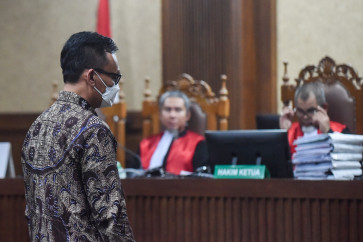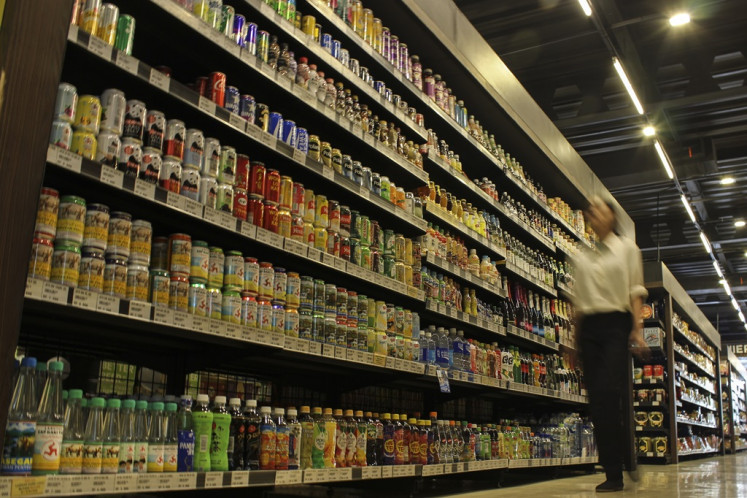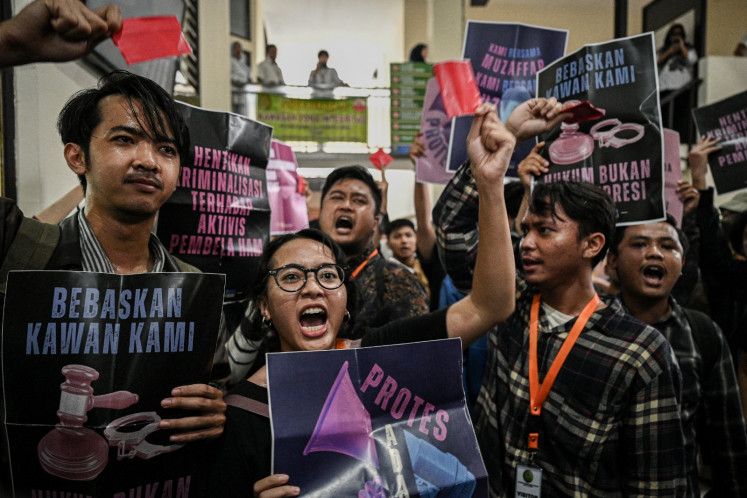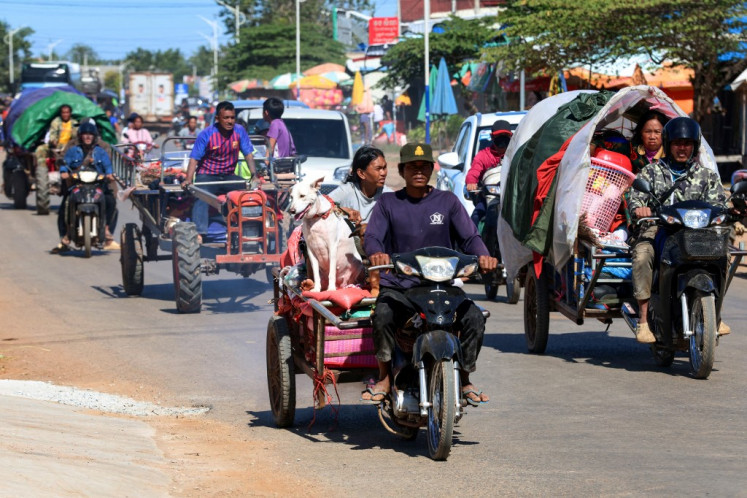Popular Reads
Top Results
Can't find what you're looking for?
View all search resultsPopular Reads
Top Results
Can't find what you're looking for?
View all search resultsLooking beyond South Jakarta
While continued development of Blok M will undoubtedly enhance the area’s appeal, Governor Pramono must look beyond South Jakarta if he wants Jakarta to become a “global city” that’s on par with urban giants like Singapore, New York, London and Tokyo.
Change text size
Gift Premium Articles
to Anyone
I
f you spend a weekend night strolling through South Jakarta’s Blok M, you’ll find a vibrant shopping hub pulsing with youth culture, where thousands of people flock to taste the latest viral foods, attend various live events or simply hunt for Instagram-worthy pictures.
But the area hasn’t always been this lively. Just a few years ago, Blok M was a fading shadow of its former self; a once-thriving commercial district that had served as one of Jakarta’s key economic hubs since 1968.
As newer shopping destinations emerged, malls in the area began to lose their appeal. One by one, shops shut their doors as customers dwindled.
The turning point came with the inauguration of MRT Jakarta in 2019, with one of its stations situated at the heart of Blok M.
This development breathed new life into the area, transforming it from a forgotten shopping hub into a magnet for investment and innovation. Blok M became a success story on how thoughtful urban planning and transit-oriented development (TOD) can revitalize a city’s economic and cultural landscape
Recently, the Jakarta administration launched another major revitalization initiative at Blok M, aiming to transform the long-standing commercial area into a 24-hour economic hub as part of the capital’s push to become a globally competitive city.
Governor Pramono Anung officially rebranded the area as “Blok M Hub” on Saturday, unveiling a series of infrastructure upgrades centered on TOD. The initiative seeks to improve access to public transport and facilities as well as pedestrian infrastructure to position the hub as a centerpiece of Jakarta’s economic transformation.
While continued development of Blok M will undoubtedly enhance the area’s appeal, Governor Pramono must look beyond South Jakarta if he wants Jakarta to become a “global city” that’s on par with urban giants like Singapore, New York, London and Tokyo.
A singular focus on one part of the city risks deepening urban inequality and missing the full potential of TOD: Attracting more residents to use public transportation, reducing dependence on private vehicles and boosting the economy.
Instead of concentrating development solely in Blok M, Governor Paramono should consider expanding TOD to other long-established economic centers such as Tanah Abang in Central Jakarta or Jatinegara in East Jakarta. These areas hold immense potential but remain underutilized in terms of integrated urban planning.
Tanah Abang is home to the largest textile market in South Asia, but despite being located near a commuter line station, an MRT stop and a TransJakarta bus corridor, the surrounding area remains chaotic, congested and unfriendly to pedestrians.
In 2019, the Jakarta administration unveiled an ambitious Rp 19 trillion (US$1.16 billion) plan to transform the Tanah Abang area into an upscale business district akin to South Jakarta’s SCBD. However, the plan never came to fruition.
Now is the time to reinvest in developing a robust transit-oriented district in Tanah Abang. With many business owners in the Tanah Abang market reporting declining profits in recent years, which is largely due to competition from online retail, revitalization is more urgent than ever.
Jatinegara Market, one of the oldest markets in Jakarta with roots tracing back to the 17th century, also faces a similar struggle. Despite its strategic location, vendors have reported a sharp decline in business in recent years, with some experiencing up to an 80 percent drop in revenue.
The market building itself appears outdated and in need of refurbishment. Revamping the space through a TOD that connects it with nearby Jatinegara station and Transjakarta bus stops, while also incorporating open green spaces, could breathe new life into the area.
The Jakarta administration has set an ambitious goal to improve the city’s ranking in the Global City Index (GCI), aiming to reach 58th place within the next five years and break into the top 20 by 2045.
Achieving this vision requires more than focusing TOD development solely in South Jakarta. Success stories like Blok M must also be replicated across other parts of the city.











